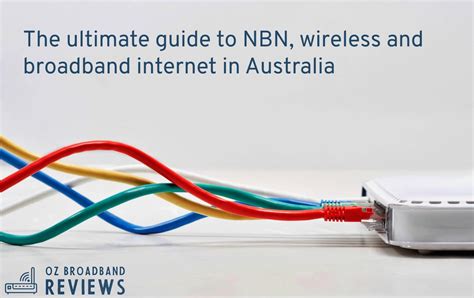Discover the difference between NBN and fiber internet. Compare speeds, reliability, and affordability to find the best option for your needs.
The Battle of NBN vs Fiber: Unraveling the Differences
The Rise of NBN in Australia
Australia’s National Broadband Network (NBN) has been a hot topic among internet users in the country. Launched in 2009, the NBN was created with the aim of providing faster and more reliable internet connection to all Australians. The network utilizes a mix of different technologies such as fiber optic cables, fixed wireless, and satellite to deliver high-speed internet access to homes and businesses across the country.
The Importance of Fiber Optic Technology
One of the key components of the NBN is fiber optic technology, which has revolutionized the way data is transmitted over long distances. Fiber optic cables are made of thin strands of glass or plastic that transmit data using light signals. This technology allows for faster internet speeds and more reliable connections compared to traditional copper cables.
Advantages of NBN
The NBN offers several advantages over traditional internet connections. One of the biggest benefits is the speed and reliability of the network. With fiber optic technology, users can enjoy faster download and upload speeds, as well as more stable connections. This is especially important for activities such as video streaming, online gaming, and video conferencing, which require a high-speed internet connection.
Accessibility and Coverage
Another advantage of the NBN is its widespread coverage across Australia. The network aims to provide high-speed internet access to all Australians, regardless of their location. This means that even people living in remote or rural areas can enjoy the benefits of fast and reliable internet connection. The NBN also offers different plans and packages to suit the needs and budget of different users.
The Fiber Optic Advantage
One of the main reasons why the NBN is able to provide such fast and reliable internet connection is because of its use of fiber optic technology. Fiber optic cables have a much higher capacity for data transmission compared to traditional copper cables. This means that more data can be transmitted at faster speeds, leading to a better internet experience for users.
Challenges of NBN
Despite its many advantages, the NBN has also faced its fair share of challenges. One of the main issues is the cost of rolling out the network, which has been much higher than initially anticipated. This has led to delays in the completion of the network and criticism from both users and the government.
The Fiber Alternative
While the NBN has been successful in providing high-speed internet access to many Australians, some argue that a full fiber optic network would be even better. Fiber optic technology has the potential to deliver even faster speeds and more reliable connections compared to the current mix of technologies used by the NBN. Some countries, such as South Korea and Japan, have already implemented nationwide fiber optic networks with great success.
Comparing NBN and Fiber Optic Networks
When comparing the NBN to a full fiber optic network, there are several key differences to consider. One of the main differences is the speed and reliability of the connection. While the NBN offers fast internet speeds, a full fiber optic network would be able to provide even faster speeds and more stable connections.
Another difference is the cost of the network. While the NBN has faced criticism for its high cost, a full fiber optic network would likely be even more expensive to implement. However, proponents argue that the long-term benefits of a fiber optic network, such as increased productivity and economic growth, would outweigh the initial costs.
The Future of Internet Connectivity
As technology continues to evolve, the debate between NBN and fiber optic networks is likely to continue. While the NBN has made significant strides in providing high-speed internet access to Australians, there is still room for improvement. Whether a full fiber optic network is the answer remains to be seen, but one thing is clear: fast and reliable internet connection is essential in today’s digital age.
In conclusion, the battle of NBN vs fiber optic networks is a complex issue with many factors to consider. While the NBN has been successful in providing high-speed internet access to many Australians, some argue that a full fiber optic network would be even better. Ultimately, the goal should be to provide all Australians with fast, reliable, and affordable internet connection to support the country’s digital economy and innovation.
